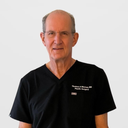Posted underFacelift q&a
When a facelift is performed, do surgeons just pull the skin or both the skin and muscles in the face?
The photos that I see in my newsfeed of facelifts are very interesting - some look very natural (like everything was lifted) and some appear as if only the skin was pulled tightly and things underneath the skin weren't adjusted to match the skin being pulled - what is going on? Are the facial muscles and tendons to be lifted as well? I'm not nearly ready for a facelift, but I may be in the distant future and would like to know exactly what is, and what is not, lifted. Thanks!
Answers (42)
From board-certified doctors and trusted medical professionals
Dr. Mark Beaty, MD

Dr. Mark Beaty, MD
Board Certified Facial Plastic Surgeon
Answer
Dr. James N. Romanelli, MD, FACS

Dr. James N. Romanelli, MD, FACS
Board Certified Plastic Surgeon
Answer
Dr. Jed H. Horowitz, MD, FACS

Dr. Jed H. Horowitz, MD, FACS
Board Certified Plastic Surgeon
Answer
Dr. Thomas A. Mustoe, MD, FACS

Dr. Thomas A. Mustoe, MD, FACS
Board Certified Plastic Surgeon
Answer
Dr. Jonathan Kulbersh, MD

Dr. Jonathan Kulbersh, MD
Board Certified Facial Plastic Surgeon
Answer
Dr. Thomas Fiala, MD, FACS, FRCSC

Dr. Thomas Fiala, MD, FACS, FRCSC
Board Certified Plastic Surgeon
Answer
Dr. Franklin D. Richards, MD

Dr. Franklin D. Richards, MD
Board Certified Plastic Surgeon
Answer
Dr. Rodger Shortt, FRCSC

Dr. Rodger Shortt, FRCSC
Certified Plastic Surgeon
Answer
Dr. James Bonaparte, MD, MSc, FRCSC

Dr. James Bonaparte, MD, MSc, FRCSC
Facial Plastic Surgeon, Certified in Otolaryngology – Head and Neck Surgery
Answer
Dr. Vincent N. Zubowicz, MD

Dr. Vincent N. Zubowicz, MD
Board Certified Plastic Surgeon
Answer
More Facelift Questions
See all Facelift Q&AWE SEND PRETTY
EMAILS
What’s trending? Who’s turning heads? Which TikTok myths need busting? We’ve got you. No fluff, no gatekeeping—just real talk. Get our free, unfiltered newsletter.

